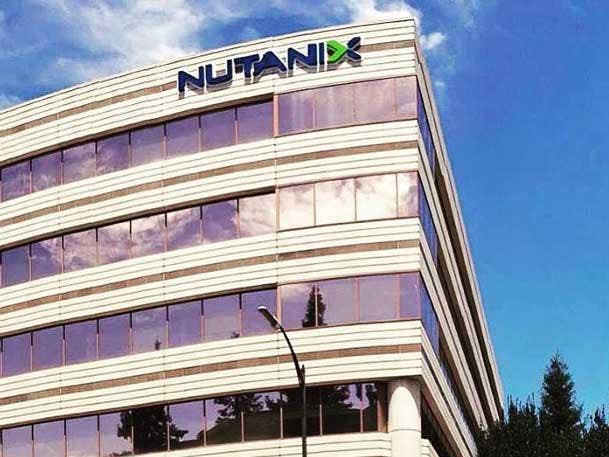Why Nutanix Is ‘Superior’ To VMware: Partners
‘It’s that flexibility that I think sets the stage for Nutanix to win over VMware. Because it’s allowing our customers to work how they want to work and not dictating how they have to work,’ says Scott Riser of CDI, which partners with VMware and Nutanix.

Solution providers that partner with both software superstars VMware and Nutanix believe Nutanix has been gaining a leg up over VMware in recent years for various reasons, including ease of operation and implementation.
“Nutanix’s key over VMware is ease of operation for end customers. They have an almost manic obsession that comes through in all of their products,” said Scott Riser, senior solution architect for New York City-based CDI, which partners with both vendors. “Everyone says, ‘one-click functionality, ease of management, etc.’ but Nutanix networking micro-segmentation—Nutanix Flow—is literally a checkbox. Whereas in VMware, it’s a $250,000 implementation for a modern-size organization. That’s a huge difference. That makes an implementation difficult to get off the ground.”
Riser said the ease of deploying and implementing offerings like Nutanix Calm blueprints, whether it’s on-premises or integrated into public cloud providers, is “a huge differentiator” in deals.
“VMware pushes their platform down. You have to be running on VMC [VMware Cloud] on AWS or VMC in Azure. While that is a capability in the Nutanix framework, you don’t necessarily have to do that. We can integrate Calm into the management structures of Azure and AWS natively without requiring Nutanix Clusters,” said Riser. “It’s that flexibility that I think sets the stage for Nutanix to win over VMware. Because it’s allowing our customers to work how they want to work and not dictating how they have to work. … Their vision and execution are superior to VMware.”
[Related: Michael Dell’s New SPAC And IPO: 5 Big Things To Know]
In an interview with CRN, Nutanix’s global channel chief, Christian Alvarez, echoed similar beliefs that his company’s mantra of simplicity and ease of use gives Nutanix a distinct advantage over VMware.
When asked what differentiates Nutanix from VMware, Alvarez said, “The fact that our solutions are simple to deploy.”
“They’ve proven themselves time and time again for lower total cost of ownership, and to operate and maintain,” said Alvarez, senior vice president of worldwide channels. “The fact that partners are able to package our solutions—whether it’s as a service, as a managed service, being able to bolt on other solutions as part of the overall stack—partners and customers are driving more away from the traditional legacy three-tiered architecture. So the multi-cloud approach with Nutanix and with partners like HPE, Lenovo, as well as with ISV companies like Veeam, Haiku and Citrix—a lot of them have native integrations with our products and solutions. It’s a game-changer.”
CRN reached out to VMware but did not hear back before press time.
Chris Lawrence, solutions architect for Virtigon, a U.K.-based Nutanix and VMware partner, said Nutanix does have the ability to take share from VMware this year as he sees more customers leveraging Nutanix.
Lawrence, who previously worked at VMware in consultant and architect roles, said VMware products are great and its hypervisor, ESXi, is industry-leading.
“But that said, it’s true that we now do probably 60-40 engagement—60 percent for Nutanix AHV [hypervisor] and 40 percent ESXi. Customers like AHV,” said Lawrence, whose Nutanix business increased double digits year over year in 2020. “AHV is effectively free with the product. It’s very attractive to customers when they look at their ELAs.”
Lawrence said Nutanix has a top-notch innovation engine and an “insanely aggressive” product release schedule.
“It’s remarkable how quick they come out with products and features to the point almost that the customers can’t keep up, but that’s a great position to be in as a vendor. The customers aren’t complaining about that,” said Lawrence. “To keep ahead of the pack, they need to be doing that because you better believe the likes of VMware and Dell are chasing down that [hyperconverged infrastructure] crown.”
Nutanix and VMware own the vast majority of the multibillion-dollar hyperconverged infrastructure software market.
The market leader depends on the IT market research firm. Gartner said Nutanix is No. 1 in market share for hyperconverged infrastructure software at nearly 53 percent, while VMware owns 40.5 percent. Research firm IDC said VMware is No.1 in hyperconverged software market share at 39 percent, while Nutanix is second at 30 percent share.
Both companies also compete heavily in the hybrid cloud software and services market as well as the channel partner arena.
Interestingly, both companies also lost their longtime CEOs in recent months. VMware’s former CEO, Pat Gelsinger, recently became CEO of Intel, while Nutanix’s co-founder and former CEO, Dheeraj Pandey, recently departed.
Another interesting recent development is that VMware is currently suing Nutanix’s new CEO, Rajiv Ramaswami, who has vowed to take Nutanix to new heights. Ramaswami was VMware’s former worldwide chief operating officer. VMware is charging Ramaswami with “material and ongoing breaches” of his legal and contractual duties to VMware as he was being courted by Nutanix in late 2020.
VMware is the virtualization powerhouse and has been successfully transitioning itself into more of a subscription and Software-as-a-Service (SaaS) company. The Palo Alto, Calif.-based company generated $2.86 billion in sales during its most recent third fiscal quarter, which ended Oct. 30, up 8 percent year over year. Nutanix reported $312 million in total revenue during its most recent first fiscal quarter earnings, representing flat growth year over year.
Both Nutanix and VMware are set to report their quarterly earnings this week.